Hello, all!
Pizza pal Brian Erst is back today for the third installment of his Chicago pizza style guide. He’s taken us to two of his favorite spots for other classic styles so far. First up was for deep dish at Uncle Jerry’s Pizza Company in Cary, IL. The second piece was about the wildly popular Kim’s Uncle in Westmont, IL.
Today’s edition is about a subtle subset of deep dish pizza that you may not have actively thought about before, which Brian will explain shortly when he takes over the mic.
Before we continue, however, this is where you should considering signing up for a paid subscription. That money goes to Brian, who’s worked hard for these pieces (he’s not a food writer by trade, if you can believe it), and a small portion also goes to the general upkeep of The Party Cut.
This kind of intel deserves financial support, so please upgrade to the full deal today. (Plus you get twice the volume of newsletter since every other edition is available to paid subscribers, so don’t worry, you don’t leave just feeling good about yourself.)
Pizza Wars Part III: Land of Confusion
Over the course of the last few months, we’ve been comparing the five indigenous Chicago styles of pizza (deep dish, thin crust, deep pan with caramelized cheese, stuffed and double decker) and highlighting one spot that does a fantastic job representing that style of pizza.
Deep dish pizza is a style of pizza that was invented here, and is unique to Chicago. It’s cooked in a pan with a relatively thin crust that’s pinched up the sides and built upside down with cheese on the bottom. Toppings are added, then it’s sauced. There is no other independently developed style of pizza quite like it.
But deep dish is often conflated with other pan-baked pizza styles that are also available in Chicago, deep pan and stuffed. It’s easy to see why. They’re served out of the same blackened steel pans, have the same sauce-on-top presentation and are served throughout Chicagoland.
Although the specifics of each style have their origins in Chicago, they are fundamentally takes on pre-existing styles of pizza. Stuffed pizza is an Americanized take on the Italian pizza rustica or “Easter pie,” while deep pan is cousin to many different American takes on the Sicilian sfinciuni-–a spongy risen dough (sfinciuni means “sponge” in Sicilian) topped with a tomato, anchovy and bread crumb topping.
But how did an admittedly hyper-regional specialty like sfinciuni morph into a Chicago classic? For that, we need to go back to 1962 and a man named Burt Katz.
The Original Pizzapreneur
Burt Katz was a Jewish-American Marine Corp veteran from Wicker Park who married his wife Sharon in 1962. The two of them went on a round-the-world, year-long honeymoon, one famous enough that it received press coverage. They made their way to Japan, bought a Toyapet Stout truck (now known as Toyota) and drove across Japan, Asia (including Afghanistan, Pakistan and Iran) and Europe. Upon returning from their travels, Burt bought into an Evanston pizzeria that came to be called The Inferno.
It was here that he developed his signature pizza style, the deep pan pizza with a caramelized cheese edge. It also began his habit of starting pizzerias, giving them literary names, and then selling and moving on to something else.
Burt sold his share of The Inferno in 1965, immediately opened Gulliver’s (after Gulliver’s Travels) on the Rogers Park and Evanston border, sold that in 1968, took a corporate job, quit in 1971, opened Pequod’s (after Moby Dick) in Morton Grove, and sold that in 1985. He finally opened his last pizzeria, Starback’s, which was another Moby Dick reference tweaked to avoid a lawsuit from Starbucks, which he later renamed Burt’s Place, in 1989 (after a non-compete expired) which he operated until his death in 2016.
A short and wiry man, Burt was known for his long flowing beard, love of antique radios, and his at that point unheard-of rule of having to pre-order a pizza the day before you showed up. That’s because at Burt’s Place, it was just Burt making the dough, preparing the pizzas and cooking them in a single deck Blodgett oven.
What Burt Katz started
The pizza style that Burt developed is both unique to Chicago and easily recognized by pizza makers on the East Coast and Detroit. Like the Sicilian-American pies developed in the New York and New Jersey area, it starts with a relatively low hydration dough that’s risen in a pan, topped with cheese, sauce, and other toppings, before being baked.
But like a Detroit pizza, Burt would line the sides of his pan with slices of cheese (in his case, mozzarella) that would caramelize in the oven. This caramelized cheese crust is controversial. Because Burt used mozzarella instead of a higher-fat cheese like the brick cheese used in Detroit or the cheddar blends used in new style Detroit-style shops, the mozzarella cheese does not turn brown so much as turn black.
A lot of people see that color and are immediately turned off by it, but it does not taste burned at all. It brings a deeply savory aspect to the pizza as well as some well-needed textural chew.
The thickness and density of the crust can also be off putting to some; occasionally people feel they are eating bread with pizza stuff on top. But at its best, the deep pan pizza is a flavor bomb. That crust is sturdy enough to hold a lot of toppings and a bunch of well-seasoned sauce. This is fork and knife pizza, to be sure, but it’s a glorious mess.
Of all the pizzerias Burt started, only The Inferno is not still in business. Gulliver’s original location on Howard Street sadly closed in 2022, but an outpost continues in Oakbrook Terrace, although the pizza recipe has changed over the years. Burt’s Place was revived a few years after his death, lovingly remodeled and with a multi-season garden patio added. The pizzeria was famously showcased on Anthony Bourdain’s No Reservations in 2009, which is ironic, since Burt required a dough reservation.
Bourdain called it his favorite Chicago pizza and the booth he sat in (I’ve sat in that booth!) has a plaque dedicated to his memory. An offshoot of Burt’s called Lefty’s has expanded into Wilmette, IL, Highland Park, IL, and Austin, TX.
The most famous of them all
Pequod’s is undoubtedly the most famous of the three. It routinely tops the lists of “best Chicago deep dish pizza” by numerous media outlets. It’s also my favorite of the bunch. Pequod’s has true punch-you-in-the-mouth flavor, as the shop amps everything to 11.
Their pies come topped with big chunks of fennel-laced sausage, fistfuls of pepperoni, and a thick, bold basil-infused sauce made with a combination of Stanislaus tomato products. It’s delicious.
Pro-tip: if you find the pizza at Pequod’s too bready for your liking, you can order it with “light dough.” The kitchen will only use about half as much dough for your pizza, giving you a much different experience. Order it both ways. Some people find the pizza unbalanced with less dough. (Not me–I’m light dough all the way!)
But now, a new generation of pizza makers are doing fresh takes on this style. Two of the best are part of a wave of pandemic pizzerias that provided one of the few bright spots in a tough couple of years for everyone.
George’s Deep Dish in Edgewater creates a pie using a sourdough recipe inspired by a Greek focaccia known as lagana. He was inspired by Detroit style pizza and a long-closed Edgewater pizzeria called Barry’s Spot, which just goes to show how this pizza style pops up from a deep well of traditions.
The other is my entry for a place that best makes the case that deep pan pizza is the true “Chicago style” pizza. Once again, this isn’t a list of “bests,” it’s a personal favorite, a pizza made by someone who is passionate about their craft and can take on the challenge of representing this style of pizza.
Go check out Milly’s Pizza in the Pan, which is in the Uptown neighborhood of Chicago.
Milly’s Pizza in the Pan is the perfect embodiment of the pandemic pizza pivot. Magic can happen when the world turns upside down.
While deep pan with caramelized cheese pizza routinely ranks as the best deep dish pizza, surprisingly few places have added it to the menu or sprung up to offer it. Pequod’s and Burt’s were the two places you could find it, and both were started by the same guy. The closest newer version is probably Labriola’s “Chicago Deep Dish,” which was built on a focaccia recipe and has that cheese crust, but they don’t really tout it as such.
But that changed when Robert Maleski jumped onto the scene.
After starting a career in financial advising, he went to Kendall College (a local culinary school then based in Evanston) where his least favorite class was baking. Robert then worked almost entirely in the front of the house at various restaurants in the northwest suburbs; he welcomed and served guests, but wasn’t in the kitchen.
As a kid, Robert grew up on Barnaby’s, one of the last remnants of a chain of thin crust pizzerias started by Angelo Geocaris. Geocaris was a beer distributor who modeled his restaurant chain after Schlitz’s Brown Bottle with an Olde English theme that didn’t quite match the pizza, but is much beloved by folks such as myself. It was a much later encounter with Burt Katz that would change the trajectory of his life and his career.
Before Burt passed away in 2017, Robert went to Burt’s Place and had one of the pizzas there. Robert says that it was like the heavens opened up. He’d never had a pizza like that before, and he became obsessed with figuring out how to make it himself.
It took him over a year, watching endless YouTube videos about pizza and dough making (Robert specifically calls out Jonathan Przybyl of Proof Bread who I also love) as well as tips from mentors such as Jonathan Goldsmith of Spacca Napoli, Derrick Tung of Paulie Gee’s Logan Square/Wicker Park and World Pizza Champion Tony Gemignani. He started to dream about leaving his job and turning pizza into a career.
When COVID came and ended his job on March 17, 2020, he took it as a sign to get serious about opening a pizzeria. Opening a brick and mortar wasn’t going to happen since getting investors, hiring contractors, and staffing were impossible at the time. So he ended up operating out of a ghost kitchen in Logan Square near Roeser’s Bakery. The name he chose for the pizzeria is a nod to two inspirations: Milly is his beloved grandmother’s name, and Burt Katz’s second pizzeria was called “Gulliver’s Pizza in the Pan.”
It was at the ghost kitchen where I first met Robert. On a rainy night during the height of the COVID pandemic, I drove down a side street to a non-descript single floor commercial building with no signs. I texted that I was there and his then fiancée (and now wife) popped out a few minutes later with a pizza in a box.
As an aside, let’s get real for a minute. COVID sucked. It sucked for everyone. The one bright spot in that miasma of misery, here in Chicago, was a boom in brand new pizzerias. Pizzerias created by people who refused to put their dreams on hold and took a leap of faith.
So many of them were passion projects by newcomers to the business, people like Billy, Cecily and Brad at Kim’s Uncle Pizza, Jerry Czerwinski at Uncle Jerry’s Pizza Company or Brett and Chadd Nemec at Zaza’s Pizza. The Chicago pizza scene kept me and a lot of other people sane during a period of time when nothing was.
I immediately opened the pizza on the trunk of my car and took this picture. What a beauty!
Robert not only makes delicious pizzas but stunning looking ones. This was a simple sausage and pepperoni pizza and yet there was so much more going on.
The first thing I want to talk about is the crust. Robert spent a long time developing that recipe, and it shows. He starts with a poolish, which is a mix of equal parts flour and water, plus a pinch of yeast that is allowed to slowly ferment overnight to add a depth of flavor. He then builds a dough out of a high-protein King Arthur Special Patent flour with 60% hydration, which leads to an airy but fine crumb. That dough is cold fermented for 36 hours to continue building flavor before being placed in a greased pan, pressed to the edges and left to rise for three hours.
What you end up with is a crust that is light and crispy, much lighter than the crusts at Burt’s or Pequod’s. If it reminds me of anything, it’s an elevated version of the old Pizza Hut Pan Pizza, back in the 80’s when it was made on-premise and was actually good. But no Pizza Hut could ever match the deliciousness of this crust.
Robert layers thin slices of high quality mozzarella across the top and all the way up the sides of the pan. Because Robert bakes at a slightly lower temperature (425F) in a convection oven, the cheese never takes on that black color. It simply caramelizes and turns into a savory brown cheese frico.
Robert tops his pizzas with a sauce made with Stanislaus 7/11 ground tomatoes, garlic, oregano and salt.
The texture of the tomatoes gives you a smooth sauce that still has some texture. He also places grape or Kumato tomato halves onto the pizzas to add a little burst of sweet freshness. He uses locally-made sausage and Ezzo GiAntonio Cup and Char pepperoni, one of the best on the market today, as well as some fresh mozzarella.
The bake starts with five minutes as an un-topped cheese and sauce pizza. Then it’s removed from the oven, additional toppings are added to keep them from overcooking, and it’s placed back into the oven for another 14 minutes.
In early 2022, Robert moved to new digs in an actual brick and mortar building in Little Saigon, a section of Argyle Street in Uptown that is best known for its Vietnamese and Chinese restaurants.
Robert, like all great pizza people, is confident in but never wholly satisfied with his pizza. He swaps out ingredients if he finds better ones, tweaks the recipe or the bake, streamlines operations, anything to make the experience better for his customers and staff. Like Jerry Czerwinski at Uncle Jerry’s, he doesn’t think of himself as some hot shot pizza maker. If anything, it’s hard to get either of them to be anything but self-effacing and humble.
But speaking of staff, Robert now actually has one, and a delightful group of folks too. He still makes all the pizza and dough, but he has helpers for handling customers and orders, prep, and is training some of them to build the pies. It was a hive of activity when I stopped by this time to take some pictures. It’s not a huge kitchen and I was definitely in the way a few times, but all was taken with humor and grace.
Right when I was getting ready to write up the story, Milly’s Pizza in the Pan sort of blew up. They were selected by ABC’s Good Morning America as the Chicago entrant in their United States of Pizza series. Things got a little hectic for a while. But it couldn’t have happened to a more deserving guy. He did Chicago proud.
Milly’s Pizza in the Pan
1005 W Argyle St.
Chicago, IL 60640
(224) 656-4732
Hours:
Mon, Tues, closed
Wed - Sat: 4 p.m. - 9 p.m.
Sun: 4. p.m. - 8 p.m.
Hi, it’s Dennis again. Brian did a great job detailing what deep pan really means to Chicago’s pizza scene. There’s two more installments of his pizza series coming in the future. Do him a favor and share this with every Chicago pizza lover you know.
I’m excited to have all of his explainers under one roof at The Party Cut, but it can’t happen without your support, so don’t forget to sign up for a paid subscription to support Brian’s series.
Every other edition of The Party Cut lives behind a paywall. I think twice the content for a nominal yearly fee isn’t too shabby.
But hey, one little bonus: Brian’s got some extra intel for us regarding Milly’s, something I do think you’ll want to know. This drops for paid subscribers on Friday.
Okay, Substack is yelling at me for going long, so have a great holiday, go visit Milly’s sometime, and I’ll talk to you all next week. Love you.

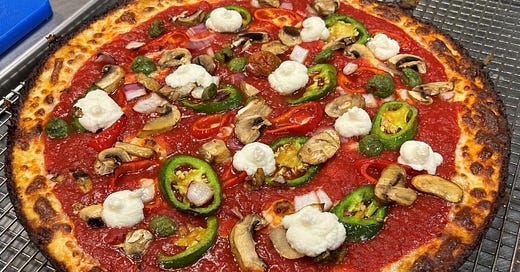



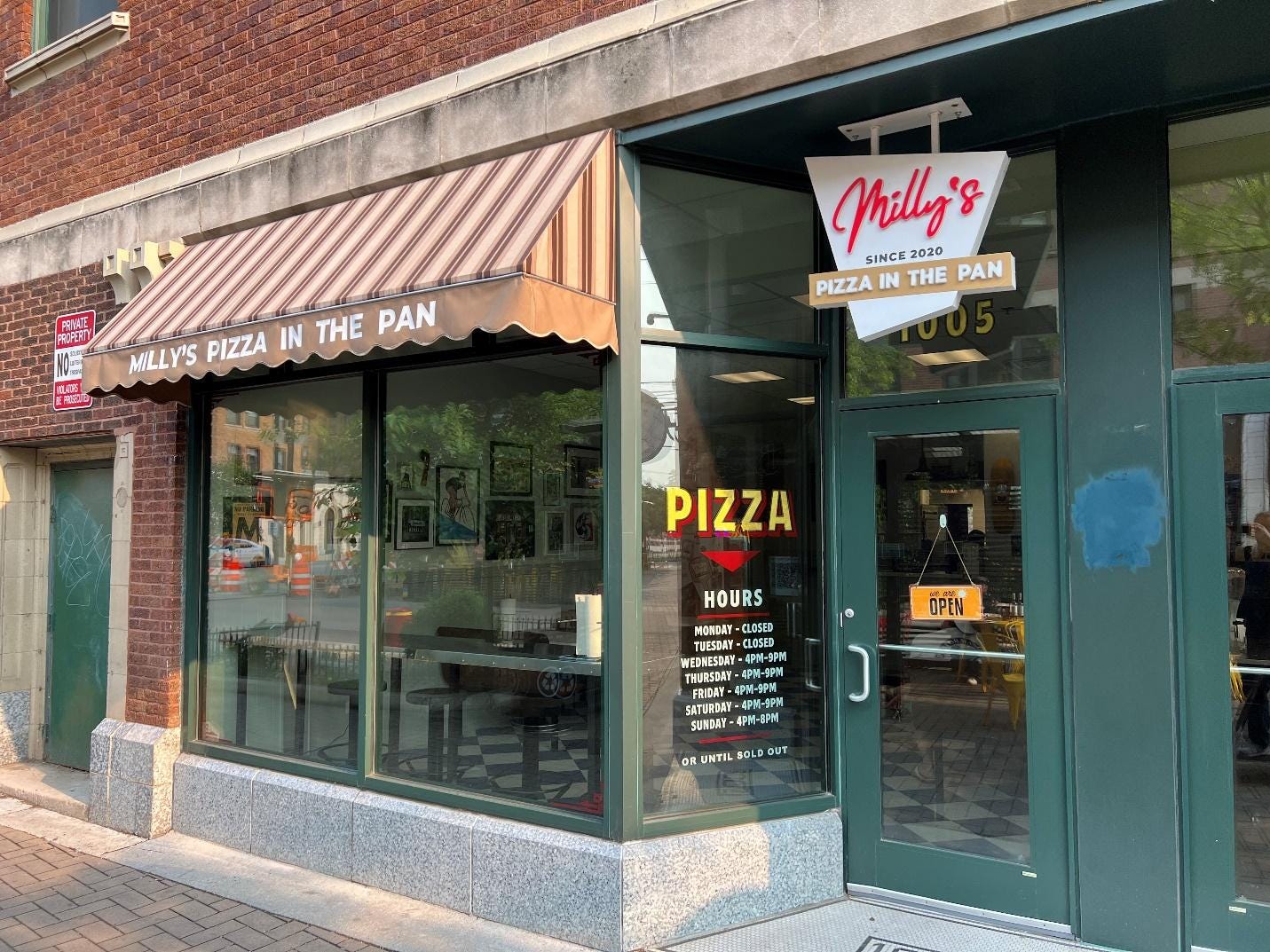

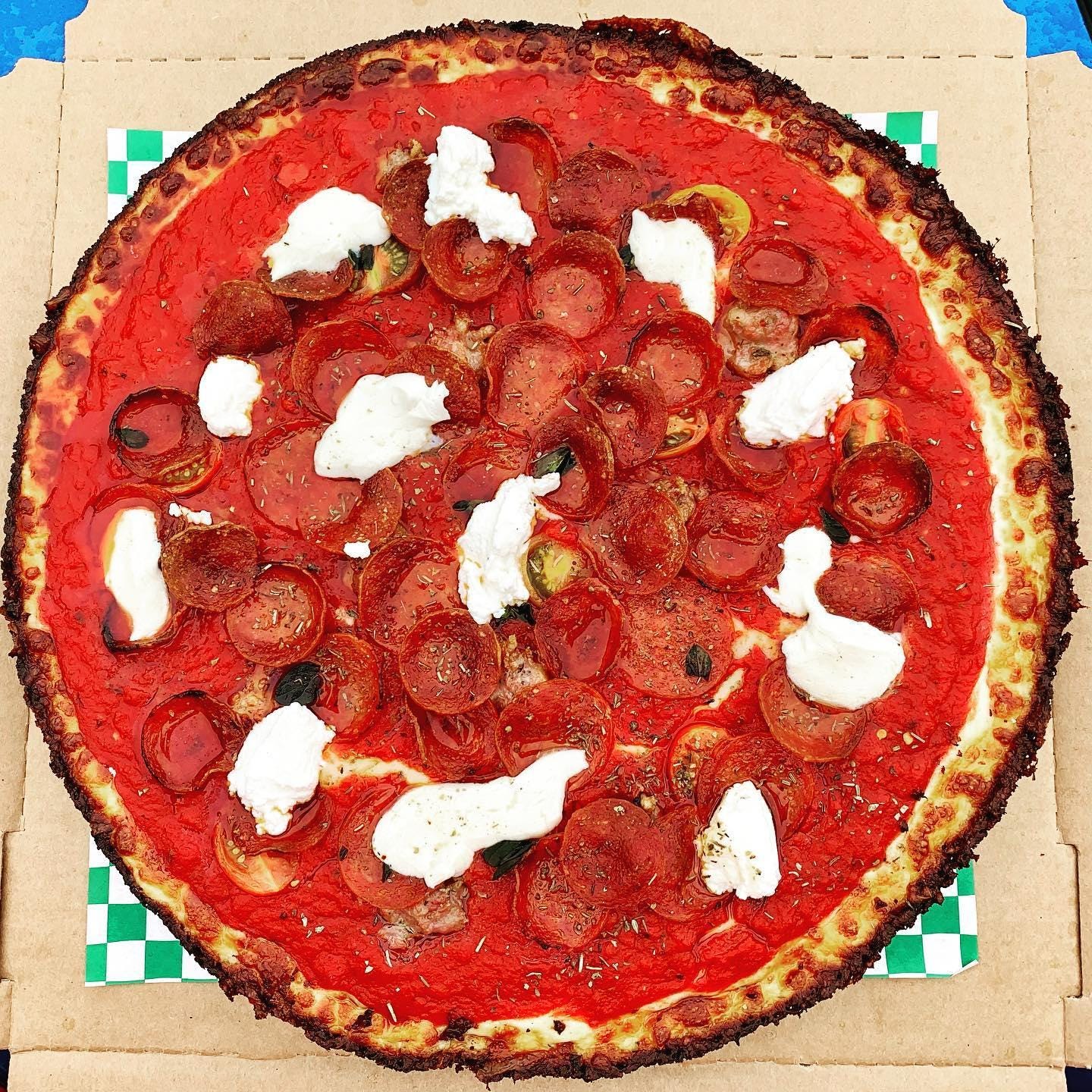
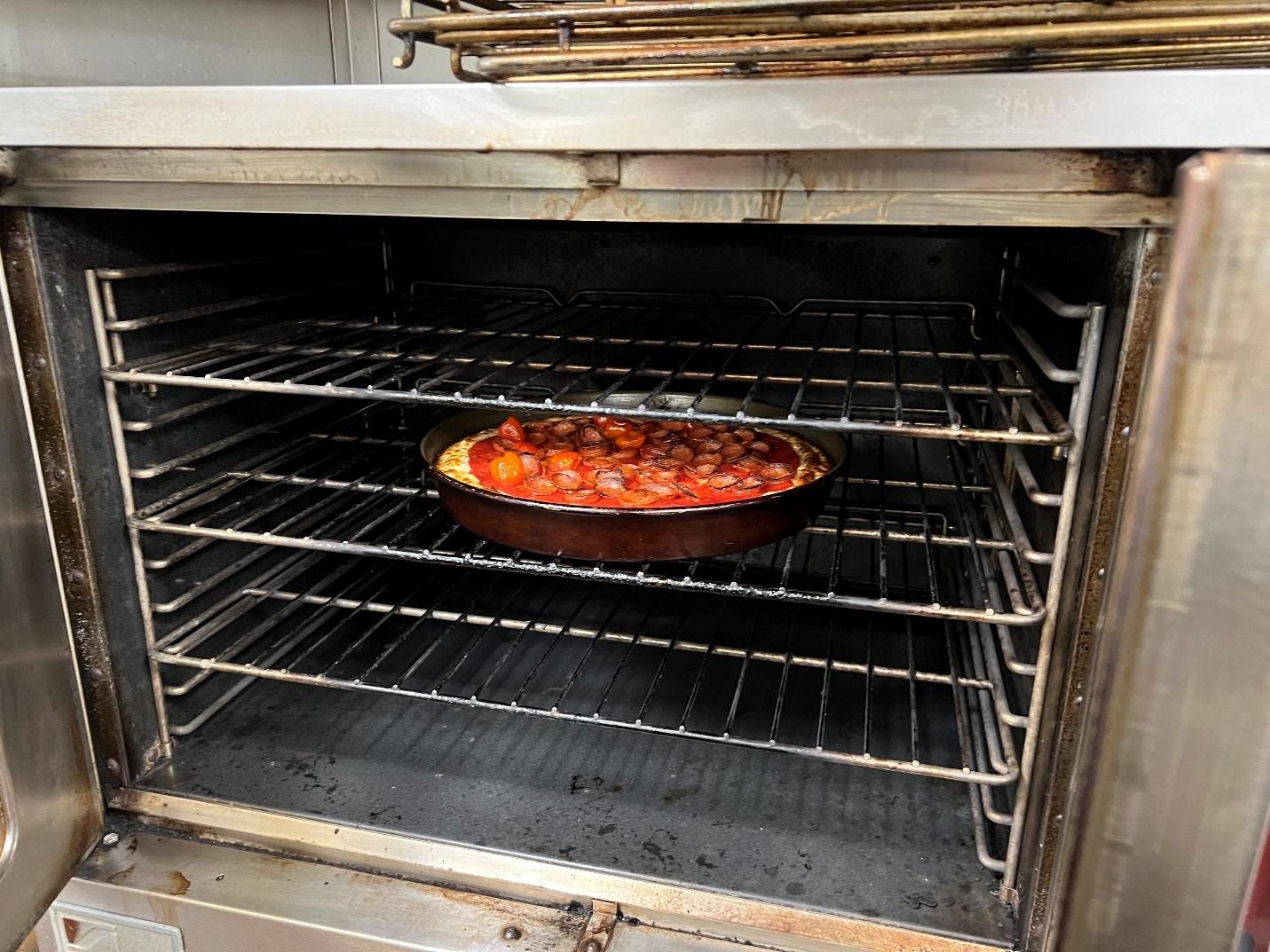
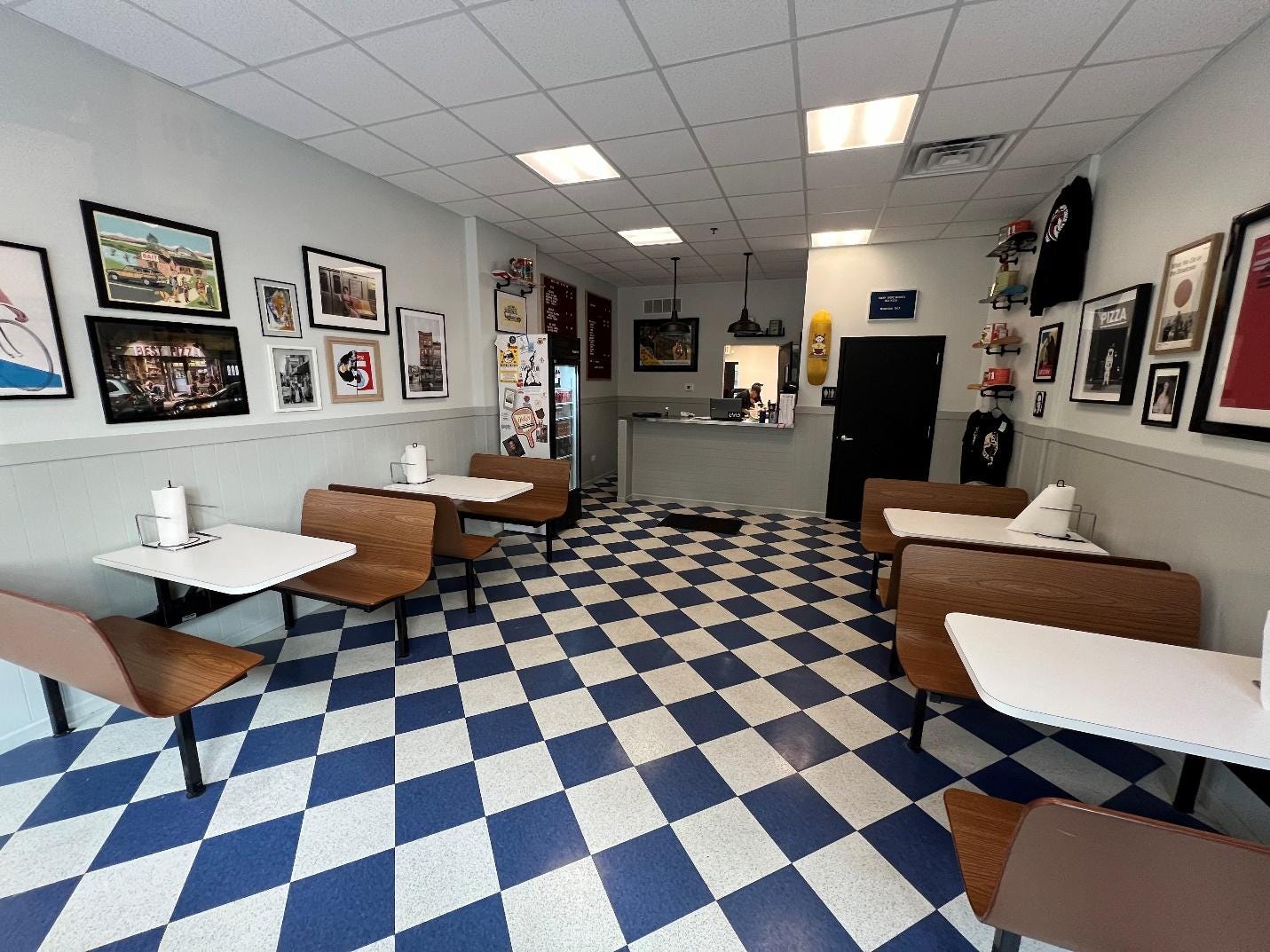
Great writing. I really enjoyed reading this one. Baking is science! Thank you.
Really great. I'd love to see some takes on Bacino's and My Pi, which were our extra-special destinations (we lived walking distance from Pat's and then Art of Pizza, no slouches either of course). I still take people to Bacino's for the stuffed spinach and the time capsule of the restaurant itself - that stretch of Lincoln was incredible back in the 80s.